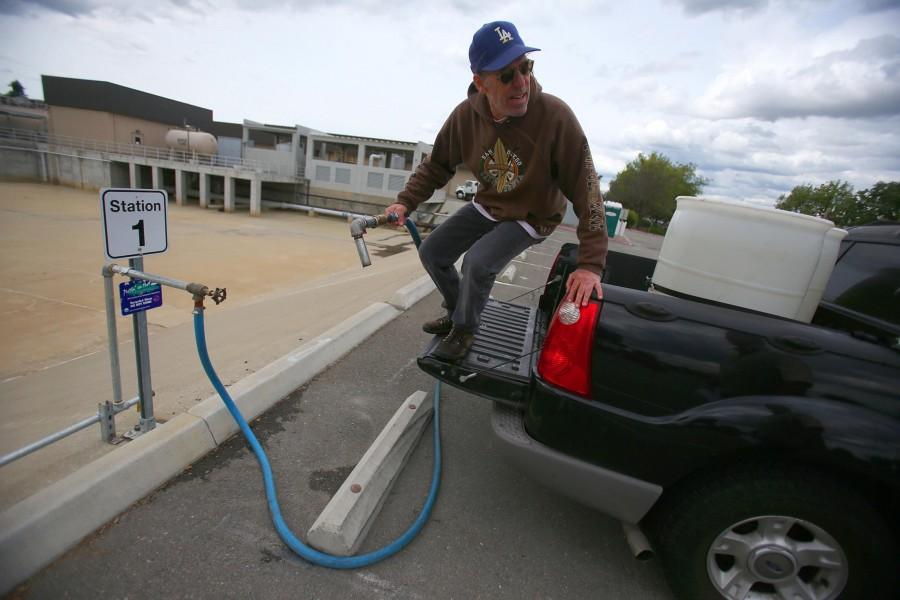Toilet Water, California’s Solution
Leon Jung hops off the tailgate of his truck after filling two 55-gallon barrels with recycled water at the Dublin San Ramon Services District on April 6, 2015, in Pleasanton, Calif. Jung uses the recycled water for his lawn, garden, and flowers. (Aric Crabb/Bay Area News Group/TNS)
The concept of drinking wastewater seems absolutely disgusting, yet it may be necessary to solve California’s perennial drought.
Taking on the problems arising from tremendous lack of rainfall that California is currently experiencing is no easy task. In fact, the state is in its driest period in 163 years. Seametrics.com reports that the demand for water has become so serious that farmers could make more money selling their water than they could make using it to grow crops.
As a result, scientists have taken to innovation to attempt to solve the issue.
Desalination is a scientific technique of purifying water that would normally be considered too contaminated to drink. While most desalination efforts are directed at purifying large water sources such as oceans and lakes, scientists are starting to look at more interesting sources to purify.
Although it is impossible to destroy or create water, since the amount of water on earth is finite, it is quite feasible to attempt to “reuse” consumed water. By stripping contaminated water down to only hydrogen and oxygen, water from even the most disgusting sources can be purified with relative ease.
This is what Orange County has successfully accomplished and is now serving as a role model for other cities.
In just 45 minutes, the city has been able to pipe local wastewater into a specialized desalination plant where it is then purified through several stages. The Orange County plant uses a three-step process in which the wastewater is treated with microfiltration, reverse osmosis, and UV concentration.
The initial microfiltration is designed to filter out all particles greater than 0.2 microns, which is sufficient to extract harmful bacteria and protozoa. In the reverse osmosis phase, the water is run through a membrane that further purifies the water by removing viruses and dissolved minerals.
Any remaining toxins are eliminated by a powerful ultraviolet light, which zaps the water. The end result is water that is not only drinkable, but also cleaner than the water that flows out of a household tap.
Naturally, there are skeptics, who find the concept of drinking water that was just recently inside a toilet to be too repulsive to stomach. Overcoming the “yuck” factor will require a communal effort from the community at large.
There is also a decent cost to this type of water filtration. The New York Times reports that the plant at Orange County alone required $481 million to install. Fortunately, other cities are looking past the economic and psychosocial cost and investing in this form of purification.
San Diego approved a $2.9 billion water program which uses desalination of recycled water as an integral component in its solution.
While it may seem like a disturbing approach, re-using toilet water has proven to be an advanced 21st century technological solution to a large-scale problem that California’s 38 million people are currently facing.


